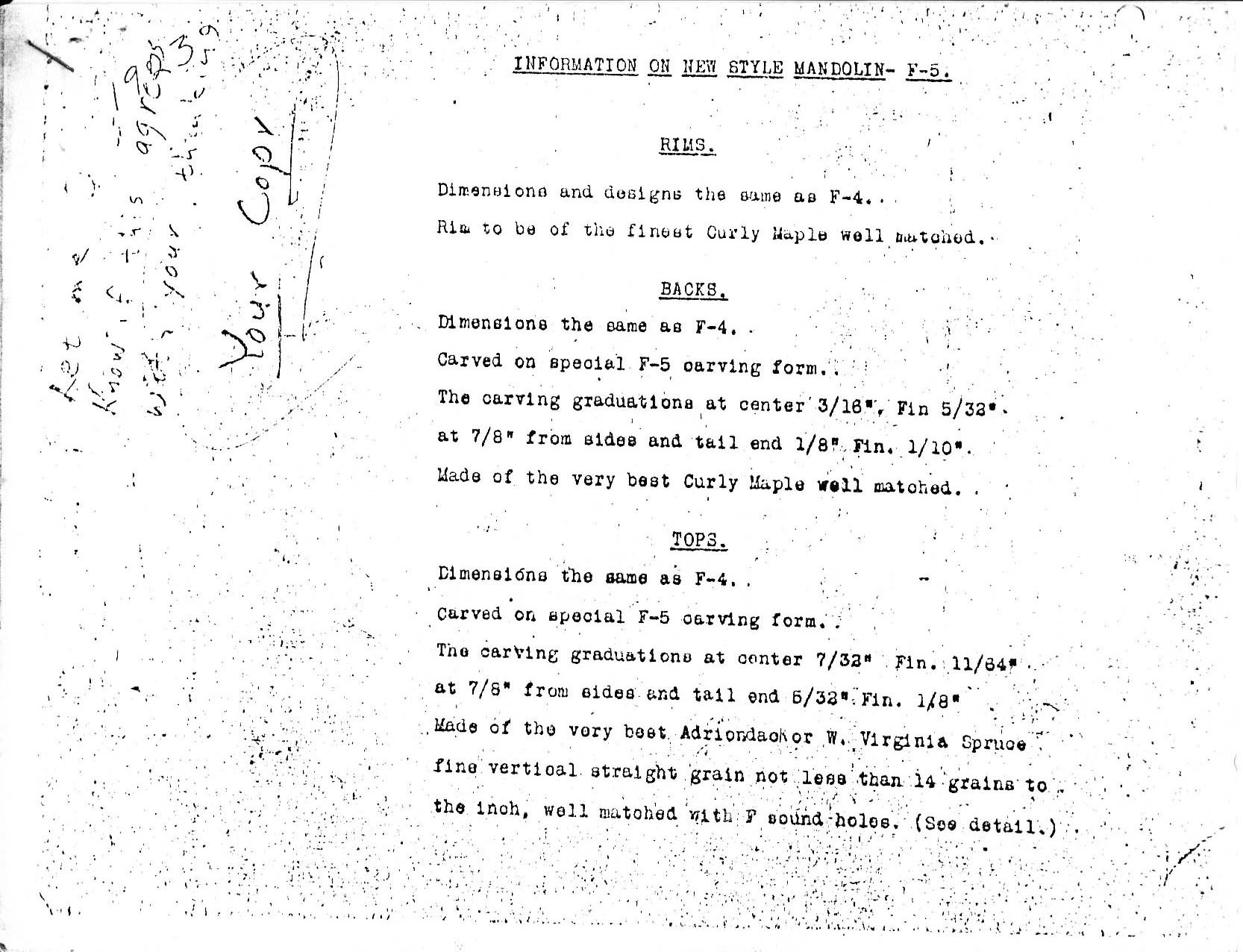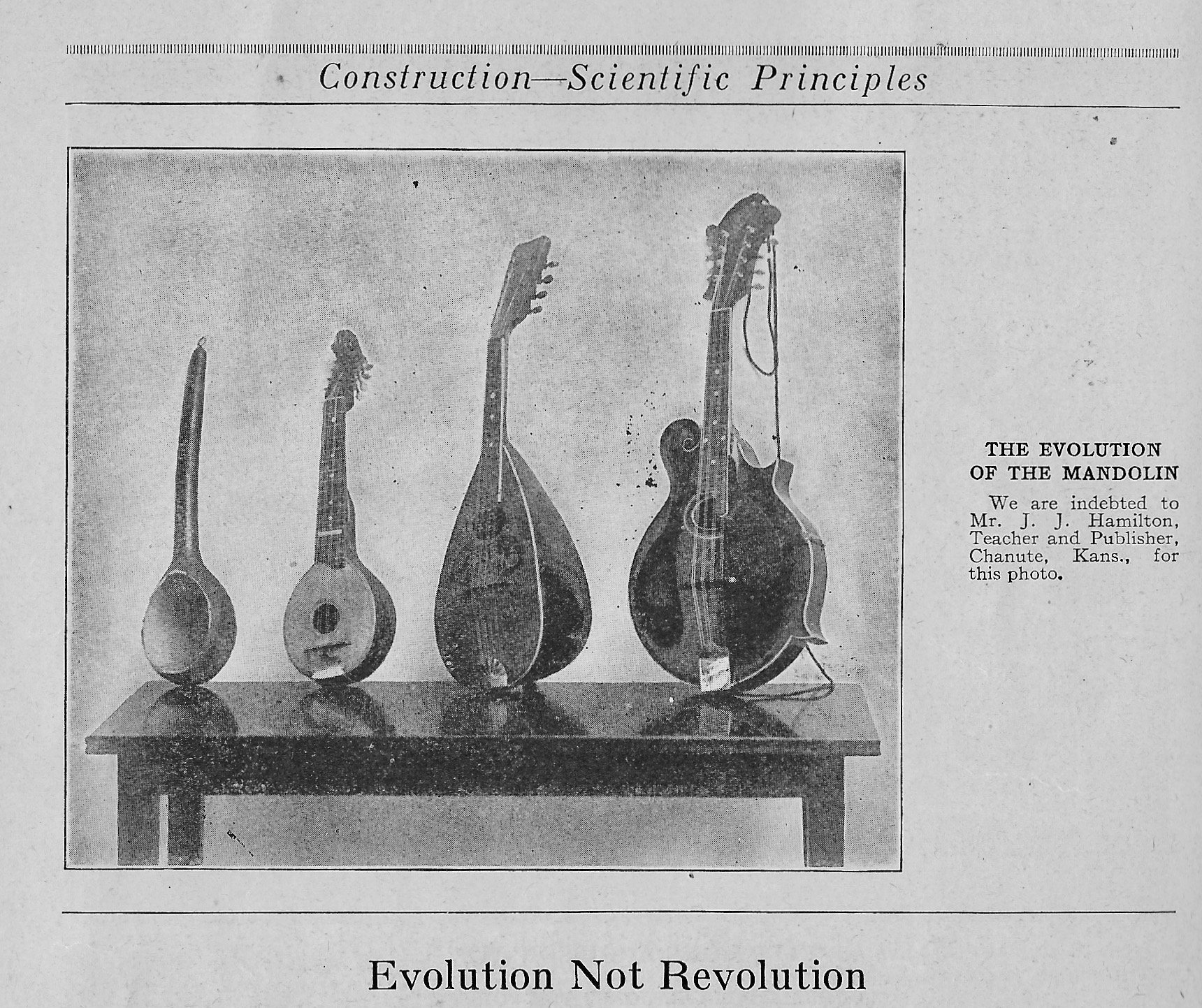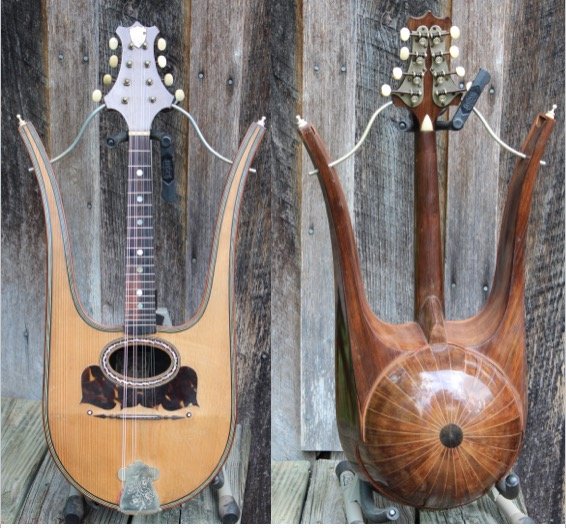“Information on the new style mandolin.”
1922 Gibson models F-4 with red sunburst (on left) and F-5 with “Gibson Cremona Brown” (photo of F-5 courtesy Wayne Joyce)
1922 Gibson models F-4 (0n left) and F-5
1922 Gibson models F-4 (0n left) and F-5.
1922 Gibson models F-4 (0n left) and F-5 (photo of F-5 peghead courtesy Wayne Joyce)
1922 Gibson model F-5 (top) and F-2 in Geib and Schaefer “Faultless” cases with green plush liner (style F-2 is more commonly seen in G&S “Faultless” case with purple flannel liner)
Specifications of style F-5 mandolin. (scan of original in-house document courtesy Stephen Gilchrist)
Specifications of style F-5 mandolin, p. 2. (scan of original document courtesy Stephen Gilchrist)
Specifications of style F-5 mandolin p. 3. (scan of original document courtesy Stephen Gilchrist)
Although the F-5 model mandolin was first built in 1922, it was not until early 1923 that this “new style” replaced model F-4 as top of the line in national advertising and in the Gibson catalog. Style F-4 had been introduced in 1902 as a 3-point artist mandolin with elaborate mother-of-pearl inlays. The price for the F-4 in the 1903 catalog was listed at $221.63 (see episode “March 22, 1922”). For twenty years, transitions in the design of this model moved away from ornamentation toward sound and playability. In the price list dated October 15, 1918, the F-4 was priced at $121; $128 with G&S form shaped case with purple flannel-lined interior and $131.75 with the red plush liner. In the January 1921 price list, with plush-lined case, the F-4 had reached its highest price to date, $230.49. With the F-5, costly upgrades were built onto the F-4 framework. Sales manager C. V. Buttelman and production manager D. C. Mafit must have been deeply concerned to find the right balance between profit with salability as they considered the price they would assign to the new style mandolin.
Music Trade Review, April 7, 1923, p. 34.
At a retail of $250, the F-5 was indeed expensive, but was it “nearly twice that of the most expensive Gibson previously made?” (see F-4 pricing, above) With the green plush-lined rectangular Geib and Schaefer case, the total was $275; adjusted for inflation, that is over $4500 in 2022 United States Dollars.
Gibson catalog “K",” 1918, p. 14.
“You Tell Me That It’s Evolution.”
While Gibson advertisement language and catalog text often ranged from hyperbole to plagiarism to outright dishonesty, the above parody of the “evolution of man” was misleading at best. It was true that for over twenty years America had been flooded with inexpensive, thin-sounding bowl back mandolins which often had problems with playability and intonation. Gibson products were clearly superior to such instruments. However, Italian mandolins of the Vinaccia, Calace, and Embergher shops were of high quality with exquisite sound. When Nicola Calace opened his shop in New York in 1901 (building mandolins under the name Nicola Turturro), he inspired a higher level of American-made bowlback mandolins. Such instruments found their way into the hands of some of the best players like Siegal and Petinne. With Old World sound deeply instilled in the minds of traditionalists, this Gibson evolution may have a steeper climb than their catalog suggests. The F-5 revolution would not take place overnight.
Ca. 1920 Amendola Brothers, New Haven, Connecticut, built in the style of Vinaccia, Napoli, Italia.
Pasquale Pecoraro, built in the style of his mentor, Luigi Embergher, Roma, Italia.
Very rare, all original 1897 Mandolira by “Fratres Calace Neapoli”—Nicola and Raffaele Calace, Napoli, Italia. Features include understated use of tortoise shell, mother-of-pearl and wood marquetry inlay; silver and ivory appointments; Brazilian Rosewood back. The Lyre-extension arms are hollow with sound holes at the tips.












